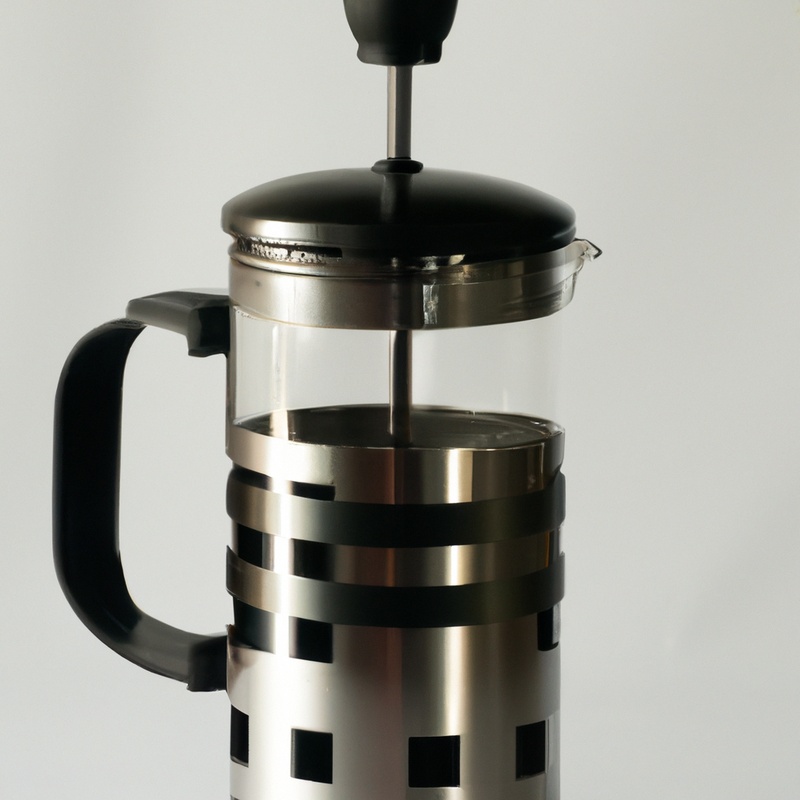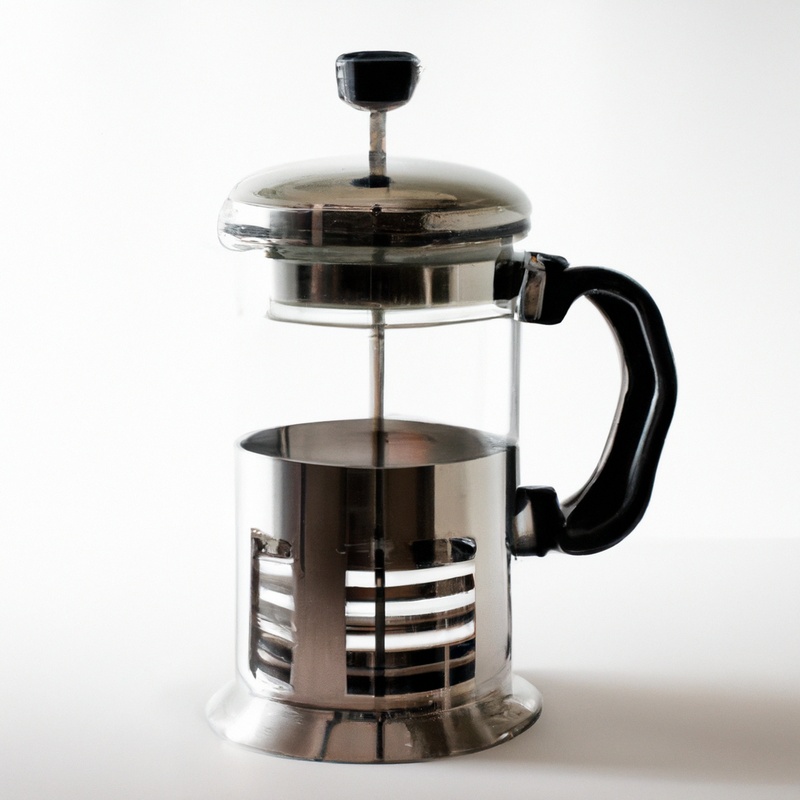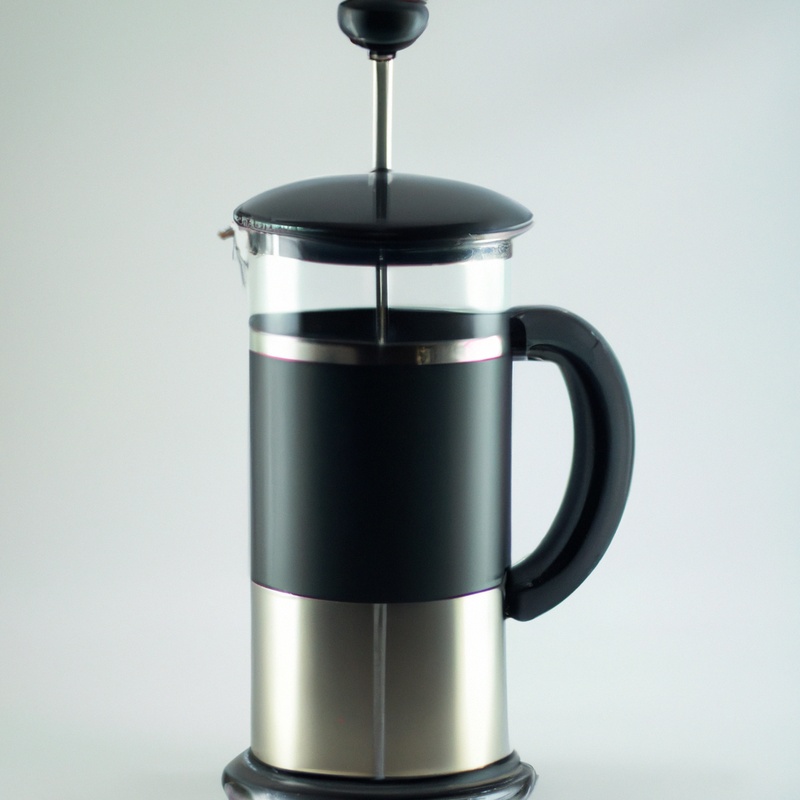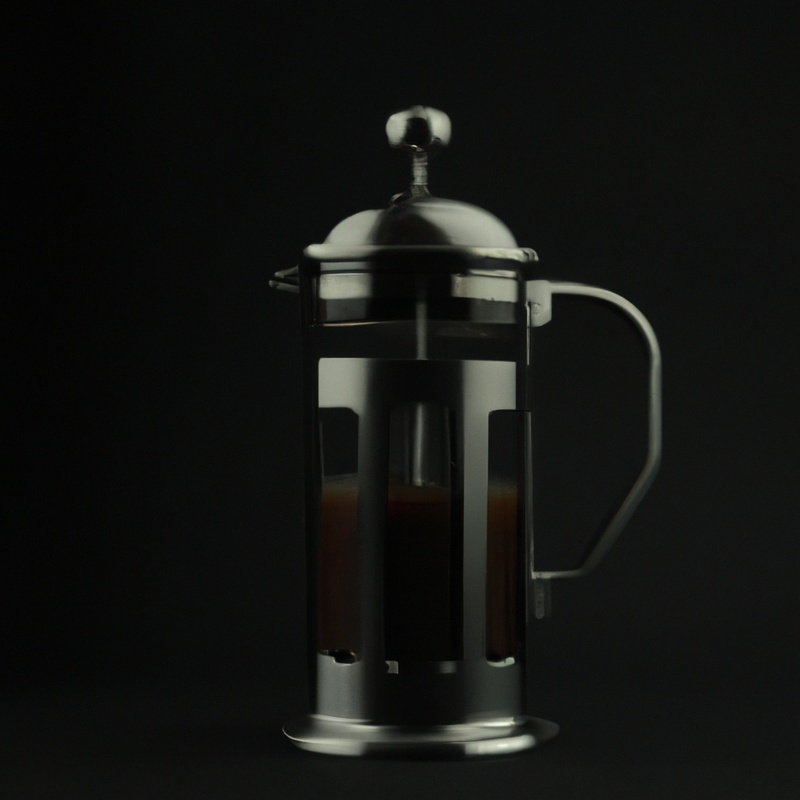Key Takeaways:
- Using a French press for making pour-over coffee is not ideal but can be done.
- Pour-over coffee requires a specific brewing method that may not be fully achieved with a French press.
- The final taste and flavor of the coffee may differ when using a French press instead of a dedicated pour-over device.
- If you’re in a pinch, a French press can be a decent alternative for making pour-over coffee.
So, you’ve got your French press and you’ve heard all the buzz about pour-over coffee.
But can you use a French press for making that smooth and flavorful brew?
Well, my coffee-loving friend, that’s exactly what we’re here to find out! In this article, we’ll dive into the world of French presses and pour-over coffee, exploring the mechanics of each method and uncovering their unique characteristics.
Then, we’ll answer the burning question: Can you use a French press for making pour-over coffee?
And if so, how can you make the perfect pour-over brew using a French press?
Get ready to unleash your inner barista!
| Method | French Press | Pour-Over |
|---|---|---|
| Equipment | A French press coffee maker | A pour-over coffee dripper, filter, and carafe |
| Grind Size | Coarse | Medium-fine |
| Coffee-to-Water Ratio | 1:15 | 1:17 |
| Brew Time | 4-5 minutes | 2-4 minutes |
| Brewing Process | Immersion brewing. Coffee grounds steep in hot water, and then the plunger is pushed down to separate the grounds from the liquid coffee. | Pour hot water over coffee grounds in a controlled manner, allowing the water to filter through the dripper and into the carafe below. |
| Resulting Coffee | Full-bodied and rich flavor, with more sediment due to the metal mesh filter. | Clean and bright flavor, with fewer oils and sediments due to the paper filter. |
What is a French Press?
A French Press is a type of coffee brewing device that is known for its simplicity and ability to produce strong and flavorful coffee.
It consists of a cylindrical glass or stainless steel container with a plunger and a mesh filter.
To use a French Press, coarsely ground coffee is steeped in hot water for a few minutes, and then the plunger is pressed down to separate the coffee grounds from the brewed coffee.
The result is a rich and full-bodied cup of coffee that many coffee enthusiasts enjoy.

What is Pour-Over Coffee?
Pour-over coffee is a manual brewing method that produces a clean and flavorful cup of coffee. It involves pouring hot water over coffee grounds placed in a filter, allowing the water to slowly extract the flavors as it passes through.
This method gives you control over the entire brewing process, from the water temperature to the pouring technique.
The result is a nuanced and balanced cup of coffee that highlights the unique characteristics of the beans. Unlike using a French press, pour-over coffee tends to have a lighter body and more delicate flavors.
How Does a French Press Work?
A French press works by steeping coffee grounds in hot water and then separating the brewed coffee from the grounds using a plunger and mesh filter.
Understanding the Mechanics of a French Press
A French press is a simple and effective way to make coffee. It consists of a cylindrical glass or metal container, a plunger with a filter attached to it, and a lid.
Here’s how it works: you add ground coffee and hot water to the press, let it steep for a few minutes, then press the plunger down to separate the coffee grounds from the liquid.
The result is a rich and flavorful cup of coffee. It’s important to use the right grind size and water temperature for best results.

How Does Pour-Over Coffee Differ from French Press?
Pour-over coffee and French press coffee differ in the brewing method and resulting flavor.
Exploring the Unique Characteristics of Pour-Over Coffee
Pour-over coffee has unique characteristics that set it apart from other brewing methods. Firstly, the pour-over method allows for more control over the brewing process, as you have the ability to adjust the water flow and the brewing time.
This results in a more customized cup of coffee tailored to your taste preferences.
Secondly, pour-over coffee typically produces a cleaner and brighter flavor profile compared to other methods. The slow and steady extraction process allows for the full expression of the coffee’s aroma and nuances.
Finally, pour-over brewing highlights the natural sweetness and acidity of the coffee, creating a well-balanced and enjoyable cup.
Overall, exploring the unique characteristics of pour-over coffee can lead to a truly exceptional coffee experience.

Can You Use a French Press for Making Pour-Over Coffee?
Yes, you can use a French press to make pour-over coffee.
Comparing French Press and Pour-Over Coffee Methods
French press and pour-over coffee methods are both popular ways of brewing coffee. Compared to the French press, pour-over coffee offers a cleaner and lighter-bodied cup.
It allows for more control over the brewing process, as you manually pour hot water over coffee grounds in a cone-shaped filter.
On the other hand, the French press produces a fuller-bodied cup with more oils and sediment. It involves steeping coffee grounds in hot water and then pressing a plunger to separate the grounds from the liquid.
Ultimately, the choice between French press and pour-over method depends on your preferences for body, flavor, and convenience.
Pros and Cons of Using a French Press for Pour-Over Coffee
Pros of Using a French Press for Pour-Over Coffee: Rich and full-bodied flavor, simplicity of use.
Cons of Using a French Press for Pour-Over Coffee: Limited control over brewing variables, possibility of sediment in the cup.
Advantages and Disadvantages of Using a French Press for Pour-Over Coffee
Advantages of using a French press for pour-over coffee:
- Full-bodied flavor: The French press allows oils from the coffee grounds to pass through, resulting in a rich and robust taste.
- Easy to use: With minimal steps, you can brew coffee using a French press. Just add coffee grounds, hot water, and wait a few minutes before pressing.
- Environmentally friendly: French presses do not require paper filters, reducing waste and environmental impact.
Disadvantages of using a French press for pour-over coffee:
- Sediment in cup: Due to the mesh filter, a small amount of sediment may be present in your coffee, which can affect the texture.
- Limited control over extraction: Compared to other pour-over methods, it’s harder to control the extraction process with a French press, potentially leading to inconsistent brews.
- Brew time: Pour-over methods usually have shorter brew times, while the French press requires several minutes, making it less convenient for quick mornings.
How to Make Pour-Over Coffee with a French Press
To make pour-over coffee with a French press, simply follow these steps.
Step-by-Step Guide to Brewing Pour-Over Coffee in a French Press
To brew pour-over coffee in a French press, start by grinding your coffee beans to a medium-coarse consistency. Then, heat water to around 200°F (93°C).
Next, add your ground coffee to the French press and pour a small amount of water over it to let it bloom for about 30 seconds.
Slowly pour the remaining water in a circular motion, making sure all the grounds are saturated. Let it steep for about 3-4 minutes, and then press the plunger down firmly.
Pour the coffee into your mug and enjoy!
Tips and Tricks for Making the Perfect Pour-Over Coffee with a French Press
Master the art of pour-over coffee with your French press using these helpful tips and tricks.
Expert Recommendations for Improving your Pour-Over Coffee Experience with a French Press
Here are some expert recommendations to enhance your pour-over coffee experience with a French press:
- Grind your coffee beans: Invest in a good grinder and opt for a medium-coarse grind size to ensure a balanced extraction.
- Preheat your French press: Warm up your French press with hot water before brewing to help maintain the temperature of your coffee.
- Use fresh, quality beans: Choose freshly roasted beans for optimal flavor. Experiment with different roasts and origins to find your preferred taste profile.
- Measure your coffee and water: Use a coffee scale to measure the right coffee-to-water ratio. A general guideline is 1 part coffee to 15 parts water.
- Bloom your grounds: Pour a small amount of hot water over the grounds and let them bloom for about 30 seconds. This helps release the trapped carbon dioxide and enhances the flavors.
- Control the brew time: Adjust your brew time to your preference. Start with a 4-minute brew time and adjust up or down based on the strength and flavor you desire.
- Gently press the plunger: After the brew time, slowly and evenly press down the plunger. Avoid applying too much force, as it can lead to over-extraction and a bitter taste.
- Pour and enjoy: Transfer the brewed coffee into a separate container immediately after pressing to prevent over-extraction. Pour into your favorite mug and savor the flavors!
Remember, these recommendations are not set in stone. Feel free to experiment, tweak the variables, and find the pour-over technique that brings you the most delicious cup of coffee.
Frequently Asked Questions (FAQs)
Common Questions and Answers about Using a French Press for Pour-Over Coffee
Can you use a French press for making pour-over coffee?
– Yes, you can use a French press for pour-over coffee by following these steps:
1. Use a coarser grind of coffee to prevent sediment in your cup.
2.
Heat water to just below boiling, around 200°F (93°C). 3.
Add coffee grounds to the French press and slowly pour hot water over them.
4. Let the coffee steep for 3-4 minutes, then press down the plunger slowly.
5.
Pour the brewed coffee into your cup, leaving any sediment behind. 6.
Enjoy your flavorful pour-over coffee brewed in a French press!
– Can a French press produce the same results as a dedicated pour-over device?
– While a French press can make a decent pour-over style coffee, it won’t produce the exact same results as a dedicated pour-over device. The mesh filter in a French press allows more oils and sediment to pass through, resulting in a slightly different flavor and mouthfeel.
However, it can still create a rich and flavorful cup of coffee.
– Is it necessary to have a specific kind of French press for pour-over coffee?
– You don’t need a specific kind of French press for pour-over coffee. Any standard French press will work.
Just ensure that your French press has a mesh filter that can allow for a coarser grind and control the flow of coffee grounds.
– Can I adjust the brewing time and water-to-coffee ratio when using a French press for pour-over coffee?
– Absolutely! You have flexibility with the brewing time and water-to-coffee ratio when using a French press for pour-over coffee. Adjust the steeping time to your preference for a stronger or milder brew, and experiment with different coffee-to-water ratios until you find the taste you desire.
– Are there any common mistakes to avoid when using a French press for pour-over coffee?
– One common mistake is using too fine of a grind, which can result in an over-extracted and bitter brew. Another mistake is pouring the water too quickly, which can lead to uneven extraction.
Also, avoid plunging the coffee too forcefully, as it may cause the fine sediment to escape into your cup.
– Do I need to preheat the French press before brewing pour-over coffee?
– Preheating the French press with hot water before brewing pour-over coffee helps maintain the optimal brewing temperature and ensures even extraction. So, it’s recommended to preheat your French press by pouring hot water into it and letting it sit for a moment before discarding the water and proceeding with the brewing process.
Final Verdict
While both the French Press and Pour-Over methods have their own unique characteristics, it is indeed possible to use a French Press for making pour-over coffee.
The mechanics of a French Press allow for a similar brewing process, resulting in a flavorful cup of coffee with a clean taste.
However, it is important to note that the French Press may not provide the same level of precision and control as a dedicated pour-over coffee maker.
Nevertheless, with the right technique and attention to detail, you can still achieve a delicious pour-over coffee using a French Press.
Experiment, adjust, and enjoy the art of brewing!
